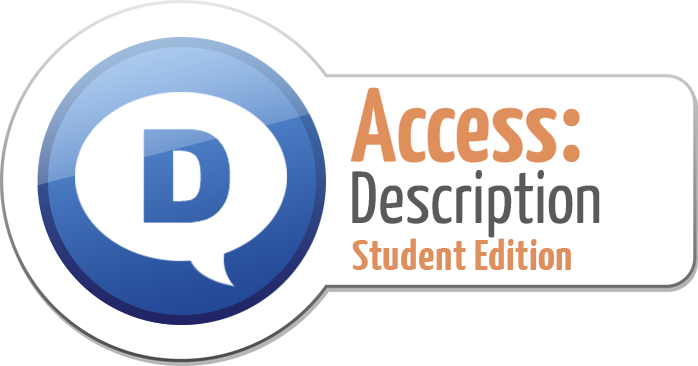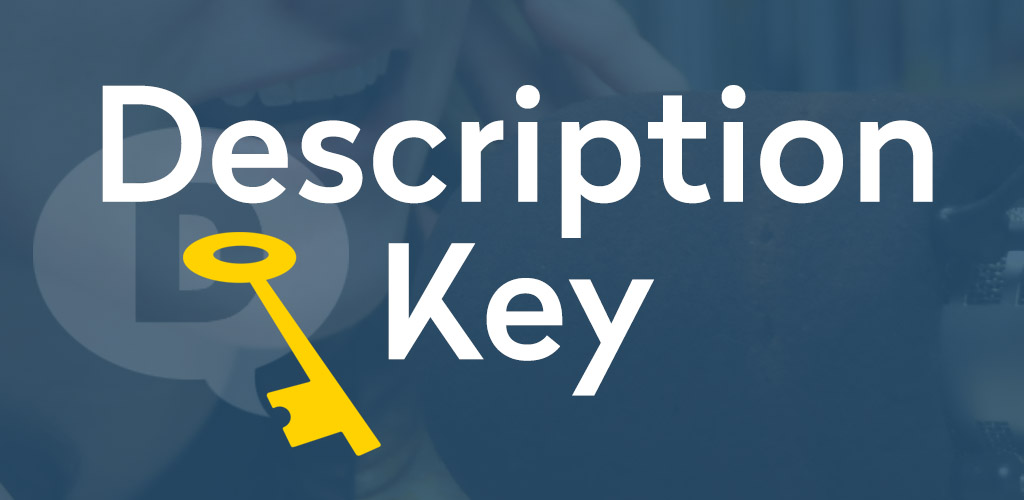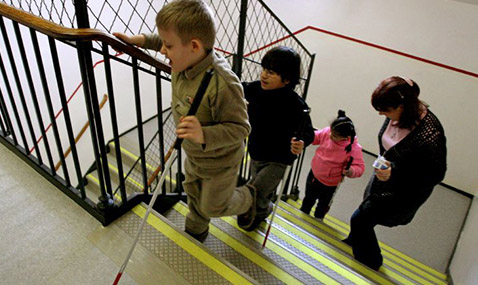99 Learning Center results found.

Access: Description Module Student Edition
Access: Description Module Student Edition is an overview of audio description and why it is essential to providing access for individuals who are blind or have low vision. Students will learn what makes up high-quality description and what they should expect from description. They’ll learn about the history of description and what laws promise them equal access to media. The module contains interactive components to engage students as they learn.
From about module

DCMP's AI Scene Description Tool
DCMP operates the nation’s largest fully-accessible educational video platform, with a library of 18,000 videos designed for use by early learner through Grade 12 students with disabilities. Our development team has been working on ways to use artificial intelligence (AI) to help with accessibility challenges, including those that might be considered “impossible.” We’re excited to present “AI Scene Description,” a new tool for students who are blind and have low vision that can describe the visual elements of any frame within a paused video.
From DCMP Help Center

Welcome to the Description Key
Description is the key to opening a world of information for persons with a vision loss, literacy needs, or loss of cognitive abilities. The American Foundation for the Blind reports that 21.5 million adults have vision loss and 94,000 children with a vision loss are being helped by some kind of special education. While description was developed for people who are blind or visually impaired, sighted children may also benefit from description’s concise, objective translation of media’s key visual components. Specialized learners, such as students with learning differences, English language learners, and children on the autism spectrum, benefit from its value in literacy development (e.g., vocabulary and reading) and content learning. DCMP’s Listening Is Learning campaign focuses on these benefits.
From about description-key, guidelines

Corpus Based Analysis of Audio Description
This paper presents an investigation into the automated analysis of audio description scripts for 91 films. The investigation reveals some idiosyncratic features of what appears to be a special language. The existence of a special language is explained in part by the fact that audio description is produced by trained professionals following established guidelines, and its idiosyncrasies are explained by considering its communicative function – in particular that it is being used to tell a story.
about research, description

Audio Description Text for Indexing Films
Access to audiovisual materials should be as open and free as access to print-based materials. However, we have not yet achieved such a reality. Methods useful for organizing print-based materials do not necessarily work well when applied to audiovisual and multimedia materials. In this project, Canadian researchers James Turner and Suzanne Mathieu studied using audio description text and written descriptions to generate keywords for indexing moving images. In the second part of the study, they looked at the possibility of automatically translating keywords from audio description text into other languages to use them as indexing, with encouraging results.
about research, description


Audio Description: Research Into Awareness Levels
As part of the United Kingdom's (UK) Office of Communications (Ofcom) Access Service Review, this report details the results of Ofcom's advertising campaign to increase public awareness about audio description on British television. Prior to the campaign, fewer than 40% of UK adults (and fewer than 37% of visually impaired UK adults) were aware of audio description services, a severe departure from the level of familiarity with captions (known as subtitles in the UK) at 90% and sign language interpreting at 86%. Ofcom commissioned this study to measure the effectiveness of its campaign to educate the general public about audio description, as well as to: (1) establish awareness levels of audio description within the visually impaired community, (2) investigate usage of audio description services, as well as other tools used to access television, within the visually impaired community, and (3) understand media consumption among groups of visually impaired people, and identify any differences that might ex...
Read More
about research, description

Audio Description From a Discourse Perspective
In her paper about audio description (AD), Sabine Braun outlines a discourse-based approach to AD focusing on the role of mental modeling, local and global coherence, and different types of inferences. Applying these concepts to AD, she discusses initial insights and outlines questions for empirical research, with an aim to showing that a discourse-based approach to AD can provide an informed framework for research, training and practice.
about research, description

Interactive Transcripts for Captions and Description
DCMP videos include transcripts of the caption and description files. Interactive Transcripts scroll "live" as the video plays, with words highlighted in yellow as they are captioned or spoken so that students can follow along. Interactive Transcripts are accessible by screen readers.
From DCMP Help Center

The ACB Audio Description Project Guidelines
This short document was drafted by the Audio Description International (ADI) Guidelines committee in 2003 and serves as a useful reference of guidelines for audio describers. The Audio Description Project, formerly the ADI, an initiative of the American Council of the Blind, makes these guidelines available.
about manuals-and-guidelines, description

Audio Description, A Visual Assistive Discourse
Individuals who are visually impaired and blind face challenges in accessing many types of texts including television, films, textbooks, software, and the Internet because of the rich visual nature of these media. In order to provide these individuals with access to this visual information, special assistive technology allows descriptive language to be inserted into the text to represent the visual content. This study investigates this descriptive language. A thesis written by Philip Piety, Georgetown University, in 2003.
about research, description

Do It Yourself Educational Description Webinar
This an archive video of the Video Description Research and Development Center webinar #2 - "Do It Yourself" Educational Description: Guidelines and Tools. The webinar occurred October 24, 2012. Topics in this webinar include: 1) An update of the activities of the VDRDC; 2) The "Dos and Don'ts" of description; 3) Live demonstrations of two free software programs which can be used to add description to media; and 4) An overview of resources for obtaining described materials for use in the classroom.
about webinar, manuals-and-guidelines, description

Audio Description: The Visual Made Verbal
Joel Snyder tells us that Audio Description (AD) provides a verbal version of the visual for the benefit of people who are blind or have low vision. Succinct descriptions precisely timed to occur only during the pauses in dialogue or significant sound elements of performing arts or in media allow persons with vision impairments to have greater access to the images integral to a given work of art. Mr. Snyder provides a brief summary of the history of description and then overviews how creating description is an art, the venues for description, skills required of a professional describer, and why description is important to literacy.
about history, literacy, description

Listening is Learning: Audio Description Aids Literacy
Years ago, my wife, Esther Geiger, was driving some children to a drama class, and the kids were chattering excitedly about the movie "Toys." It takes place in a toy factory, and the film is filled with colorful images and movement gags—but not a lot of dialogue. One child in the car, who was blind, said, "Oh, I saw that. It was the most boring movie I've ever been to!" Indeed, this was well before the advent of audio description for film.
From Joel Snyder about educators, literacy, description

Perspective: Examining the Process of Audio Description
Imagine that you are a blind, fourth-grade girl and that your class is watching a film that examines prejudice and bullying in our culture. The film is a drama, where young girls shoot scornful glares, roll their eyes, and whisper about a new student. Instead of aggressive bullying, they get up and leave when the new girl approaches. Now imagine that you're studying human anatomy in high school. The brilliantly colored graphics of today's film show how blood flows through the heart's ventricles and oxygen inflates the bronchioles in the lungs.
From Alice Austin about accessibility-vendors, description